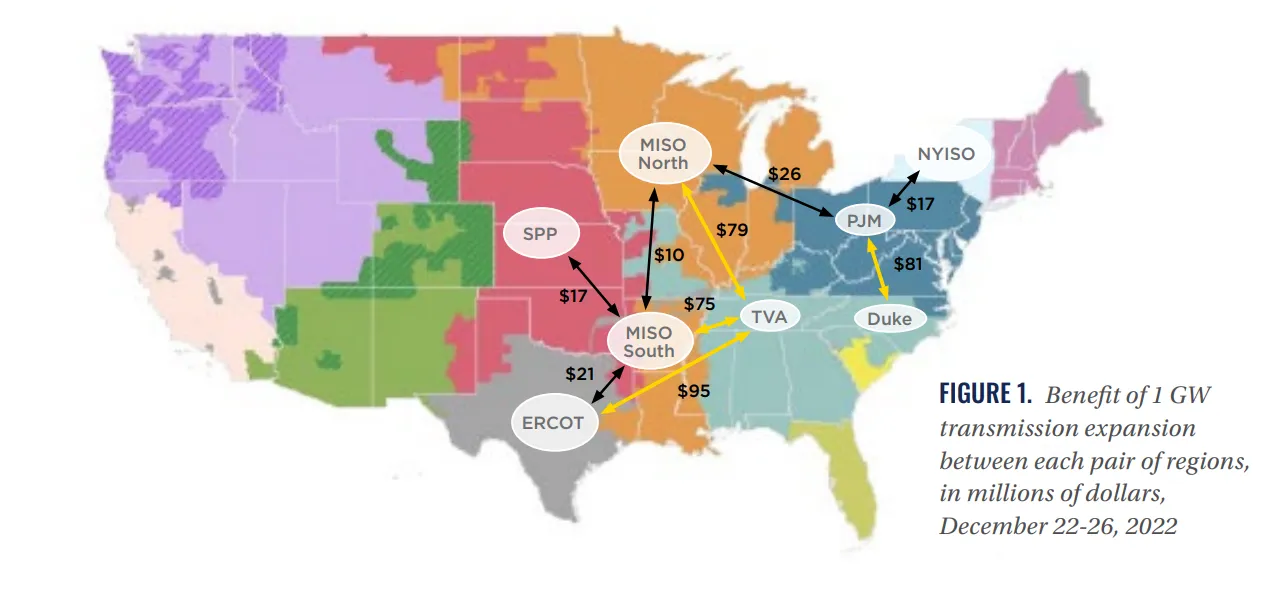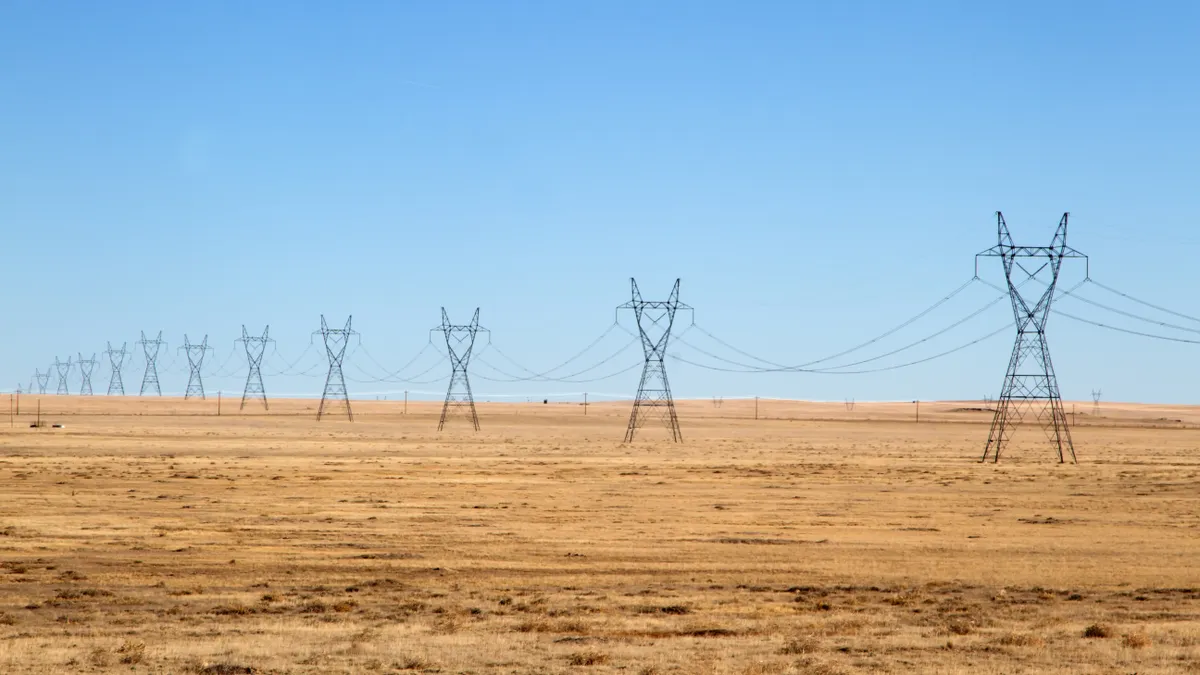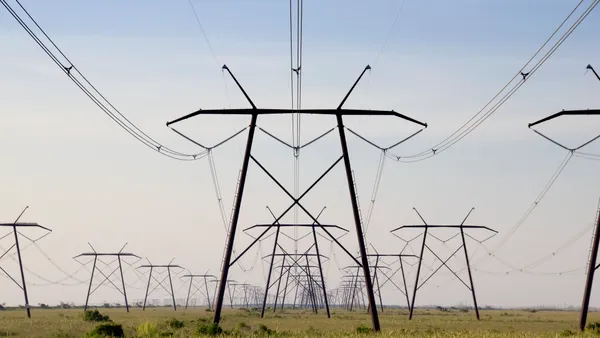Dive Brief:
- “Modest investments” in interregional transmission capacity could have helped to maintain grid reliability while yielding hundreds of millions of dollars in benefits during Winter Storm Elliott in December, according to a new report from the American Council on Renewable Energy.
- Customers of Tennessee Valley Authority and Duke Energy experienced rolling blackouts and federal regulators opened an investigation into the grid’s operation across the five-day storm.
- A 1 GW transmission line between the Electric Reliability Council of Texas territory and TVA would have provided much needed power and nearly $95 million in value, mostly to TVA customers, according to ACORE’s report.
Dive Insight:
With severe storm events more frequently challenging the nation’s bulk electric system, “the solution is making the grid bigger than the weather,” said Michael Goggin, vice president of Grid Strategies and an author of ACORE’s report.
Severe weather events typically are “relatively geographically constrained,” Goggin said, allowing for regions to help each other meet demand. “If the grid is bigger than that event, that allows you to get that demand diversity because they're not peaking at the same time. It lets you bring in generation from areas where the gas supply wasn't interrupted.”
The ACORE report found that “in some areas modest investments in interregional transmission capacity would have yielded nearly $100 million in benefits during the five-day event, while most areas could have saved tens of millions of dollars” during Elliott.

A 1 GW transmission expansion between PJM and Duke could have provided about $81 million in benefits during the December storm, according to the analysis.
About 1.7 million service disruptions occurred during the peak of Winter Storm Elliott. Downed power lines caused outages for some utilities and energy demand exceeded expectations in numerous regions. Utilities supplied by Tennessee Valley Authority service territory faced rotating blackouts for the first time in almost 100 years, and Duke’s rotating outages were the first ever by the company in the Carolinas.
“Additional transmission capacity would have protected consumers from those blackouts and price spikes by bringing in power from other regions,” the report concluded.
“There was a lot of transmission congestion, as lower cost power was not able to reach consumers who needed it to either keep the lights on in some cases, or to just keep power prices affordable,” Goggin said during a Wednesday webinar discussing the report. “There's a lot of economic and reliability value to having more transmission.”
The value of transmission goes even further than ACORE’s assessment, according to Alison Silverstein, a former senior advisor at the Federal Energy Regulatory Commission and now a consultant in Texas.
“The values that they attribute to transmission grossly understate its importance and contribution, because it is based on how much throughput can we get and how many dollars is that worth in terms of megawatt hour prices,” she said during ACORE’s webinar.
The technical term for that is the “value of lost load,” but Silverstein warned the metric often has no relationship to the value customers derive from a reliable power system.
Stakeholders across the electric sector broadly agree that more transmission is necessary, but projects can take years to develop. At FERC, Acting Chairman Willie Phillips has vowed to make transmission expansion a priority this year. But the commission has two Democratic, two Republican commissioners and an empty seat, causing some to wonder how much the nation’s chief energy regulatory body can accomplish.
“I do think that there's enormous amount of concern among all of the commissioners now as to the reliability of the grid, especially as it relates to extreme weather and what that means,” said Richard Glick, the former FERC chairman and a speaker on ACORE’s Wednesday webinar.
“There's way too much focus, in my opinion,” on the commission’s ideological split, he said. “Very rarely have the votes in the past shown up as completely partisan.”














